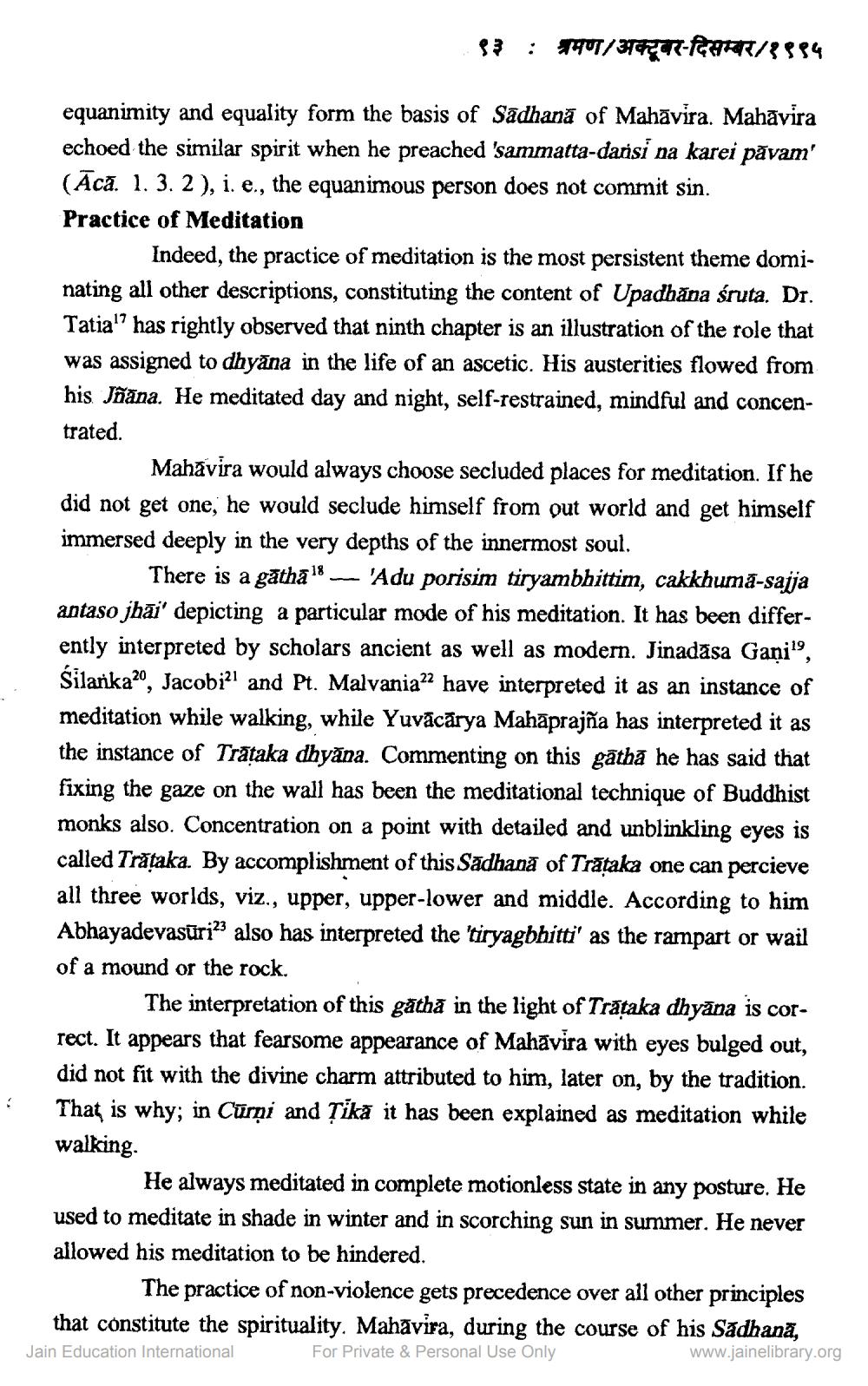________________
९३
: श्रमण / अक्टूबर-दिसम्बर / १९९५
equanimity and equality form the basis of Sadhana of Mahavira. Mahāvira echoed the similar spirit when he preached 'sammatta-dansi na karei pāvam' (Aca. 1. 3. 2), i. e., the equanimous person does not commit sin.
Practice of Meditation
Indeed, the practice of meditation is the most persistent theme dominating all other descriptions, constituting the content of Upadhana śruta. Dr. Tatia' has rightly observed that ninth chapter is an illustration of the role that was assigned to dhyana in the life of an ascetic. His austerities flowed from his Jñana. He meditated day and night, self-restrained, mindful and concentrated.
Mahavira would always choose secluded places for meditation. If he did not get one, he would seclude himself from out world and get himself immersed deeply in the very depths of the innermost soul.
There is a gatha 18 - 'Adu porisim tiryambhittim, cakkhumā-sajja antaso jhai' depicting a particular mode of his meditation. It has been differently interpreted by scholars ancient as well as modern. Jinadāsa Gani19, Silanka20, Jacobi2 and Pt. Malvania22 have interpreted it as an instance of meditation while walking, while Yuvacārya Mahaprajña has interpreted it as the instance of Traṭaka dhyāna. Commenting on this gatha he has said that fixing the gaze on the wall has been the meditational technique of Buddhist monks also. Concentration on a point with detailed and unblinkling eyes is called Trataka. By accomplishment of this Sadhana of Traṭaka one can percieve all three worlds, viz., upper, upper-lower and middle. According to him Abhayadevasüri23 also has interpreted the 'tiryagbhitti' as the rampart or wail of a mound or the rock.
The interpretation of this gatha in the light of Trataka dhyāna is correct. It appears that fearsome appearance of Mahavira with eyes bulged out, did not fit with the divine charm attributed to him, later on, by the tradition. : That is why; in Curni and Tika it has been explained as meditation while
walking.
He always meditated in complete motionless state in any posture. He used to meditate in shade in winter and in scorching sun in summer. He never allowed his meditation to be hindered.
The practice of non-violence gets precedence over all other principles that constitute the spirituality. Mahavira, during the course of his Sadhanā, For Private & Personal Use Only
Jain Education International
www.jainelibrary.org




